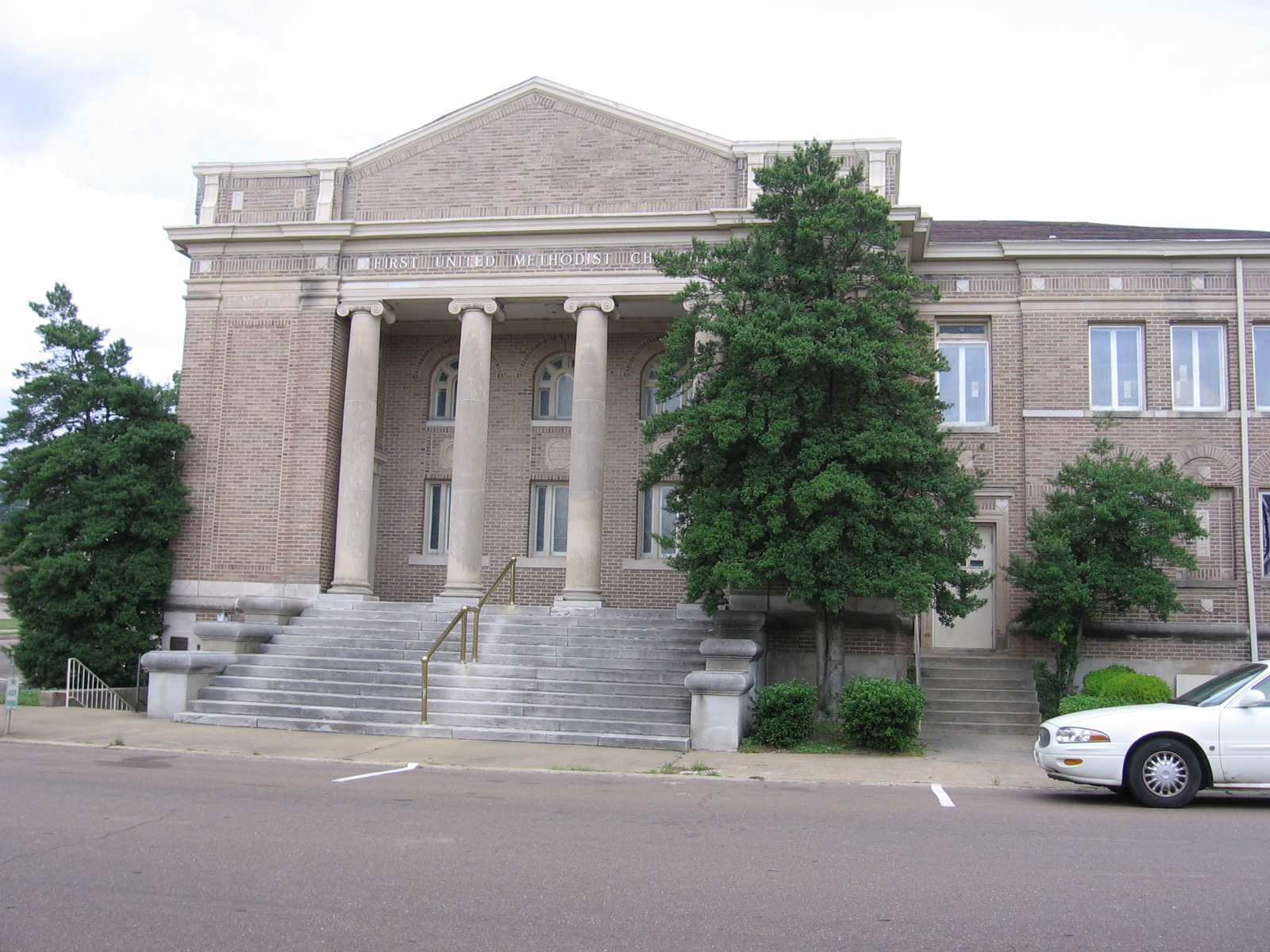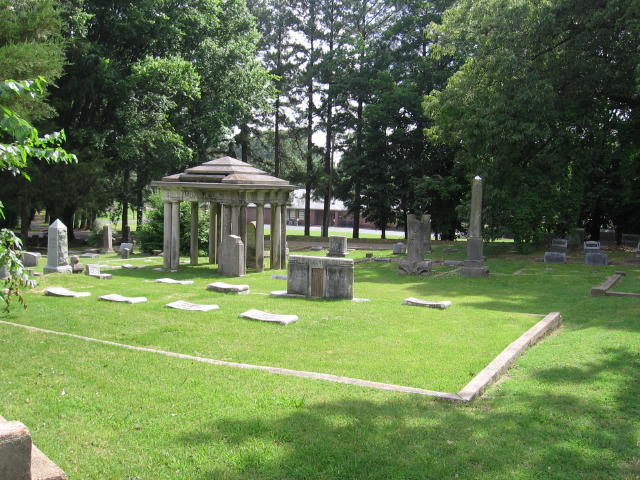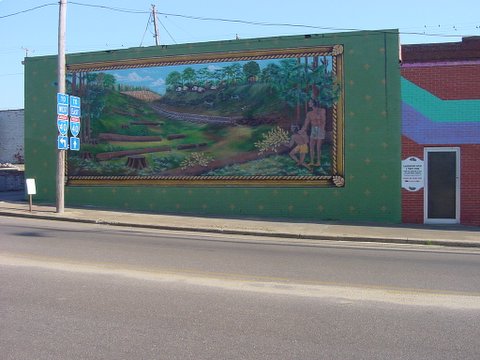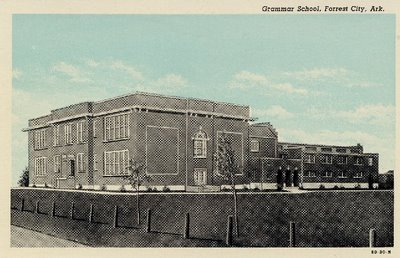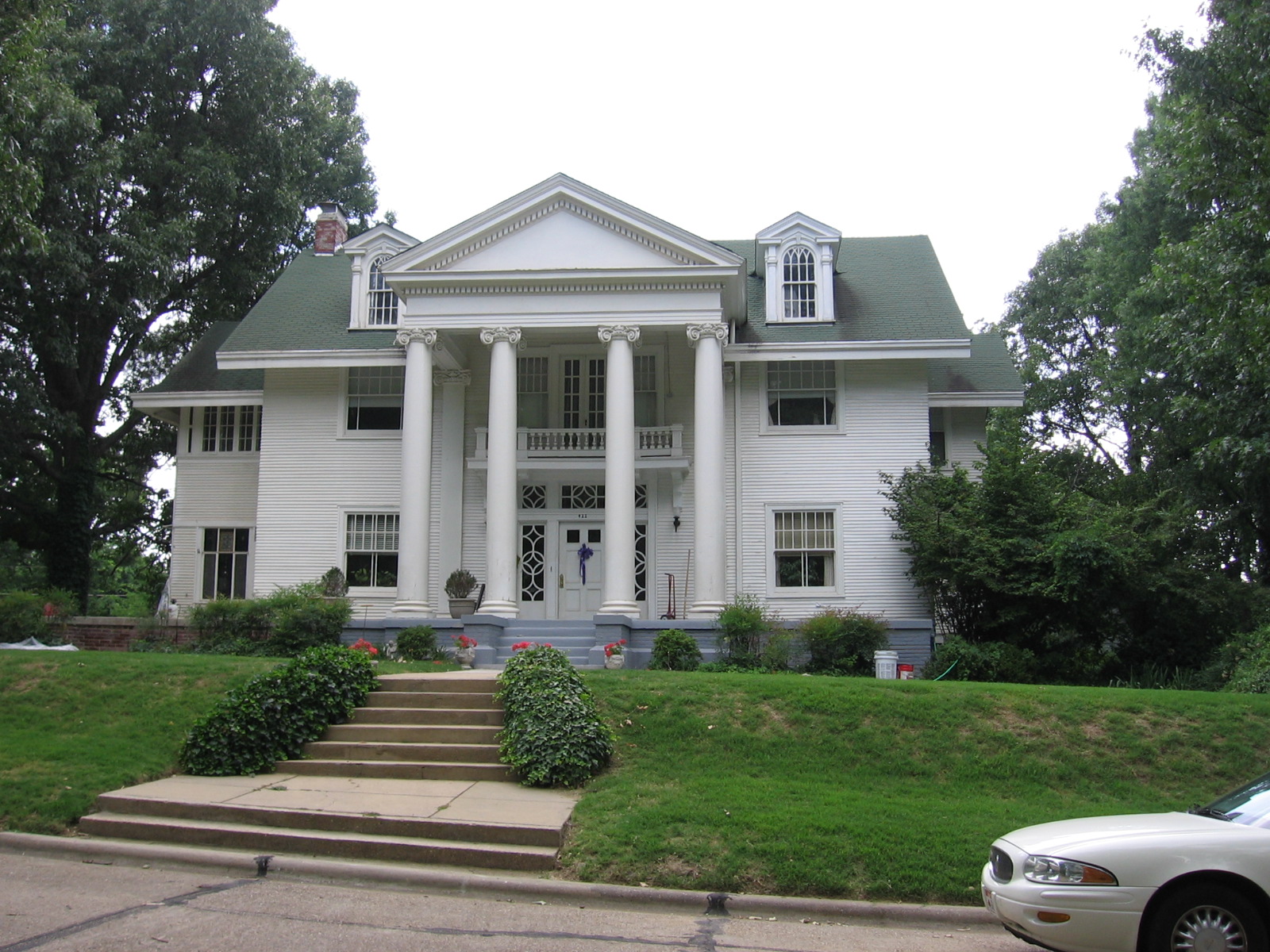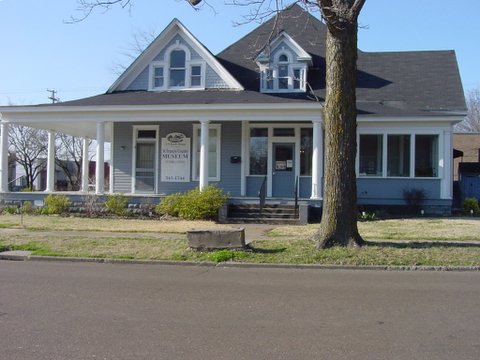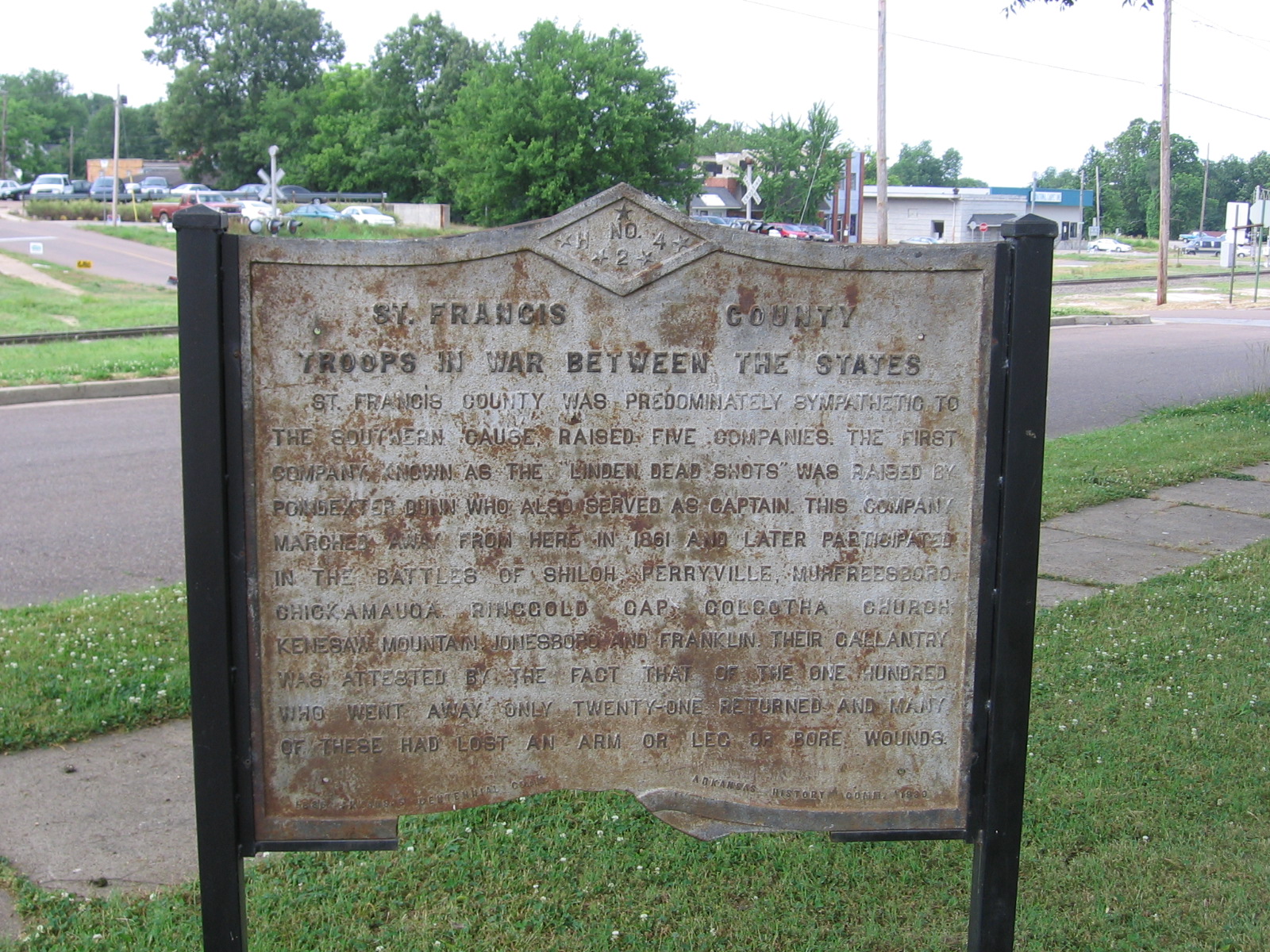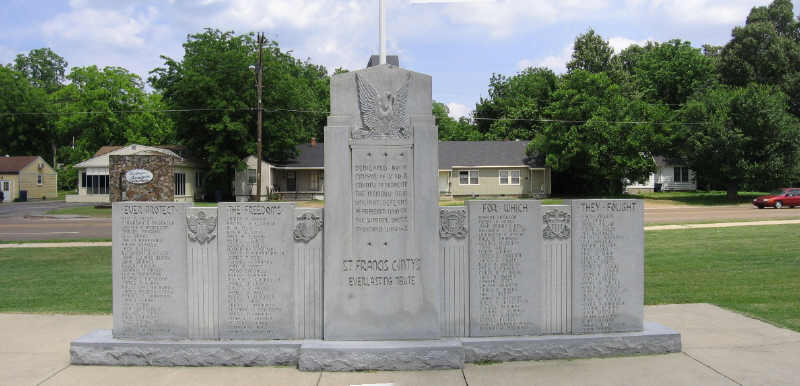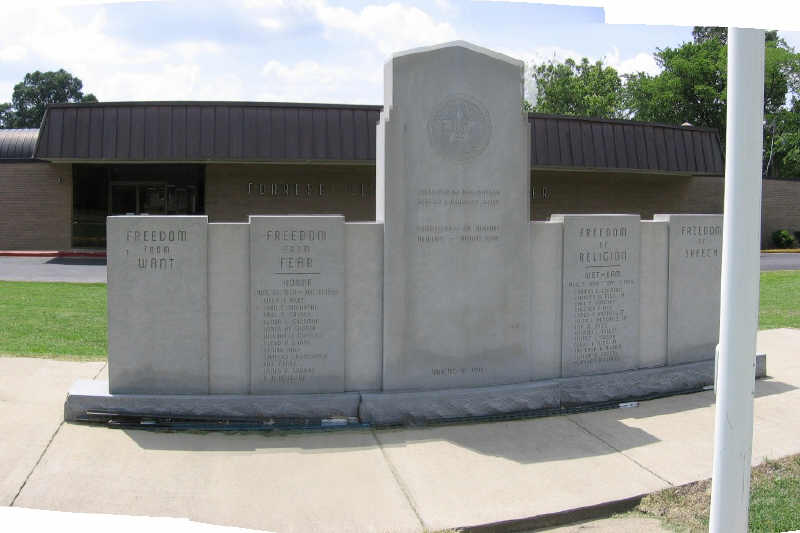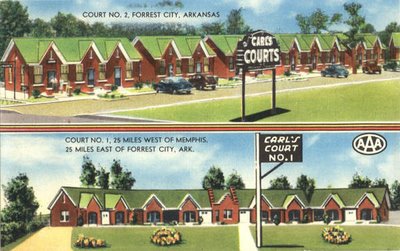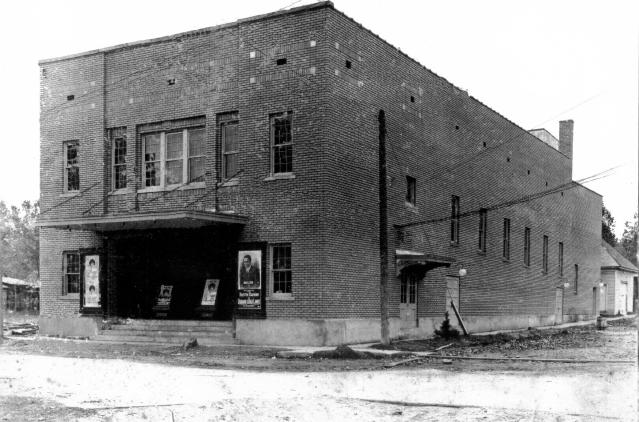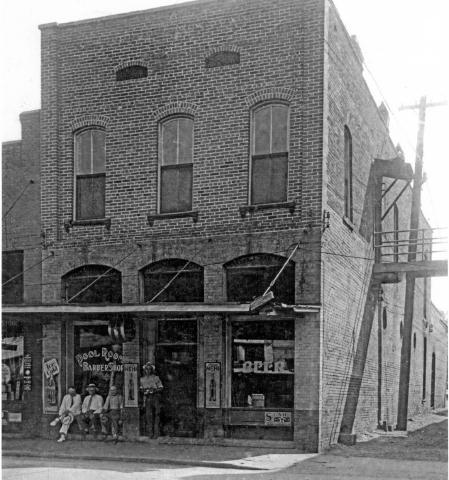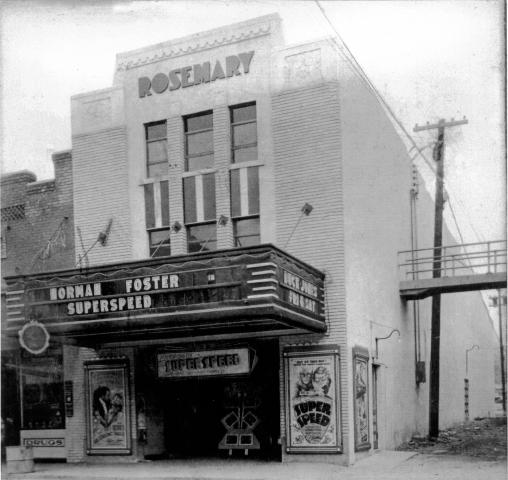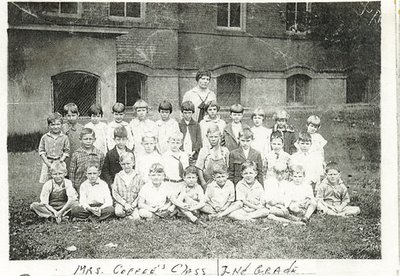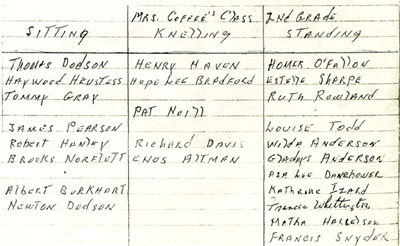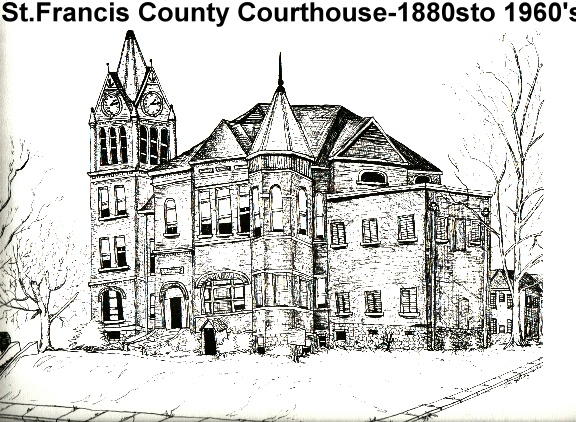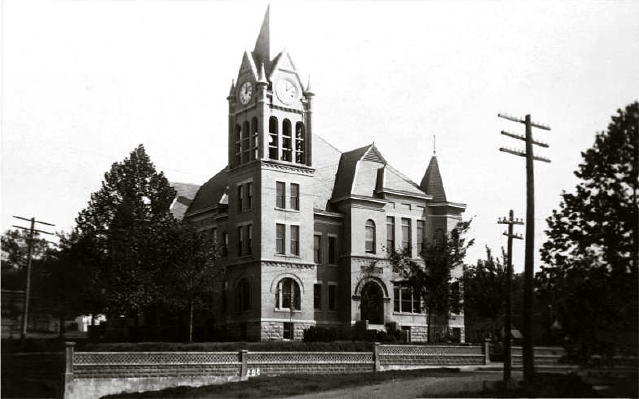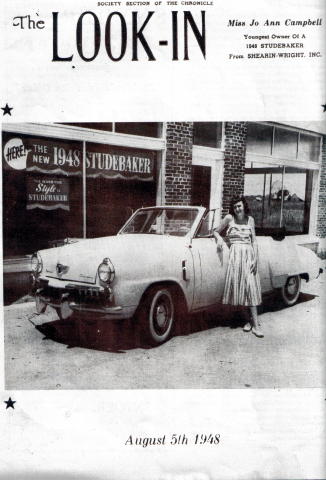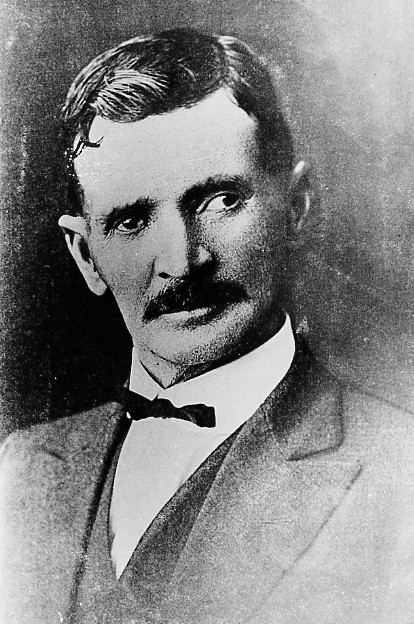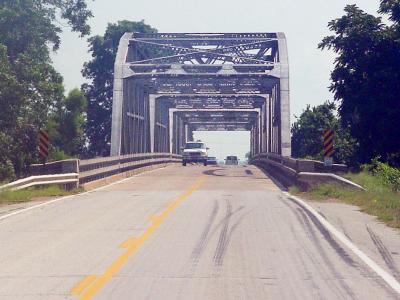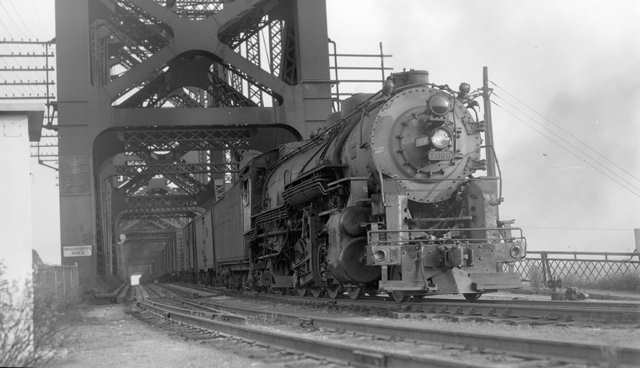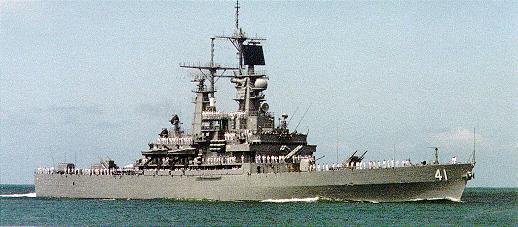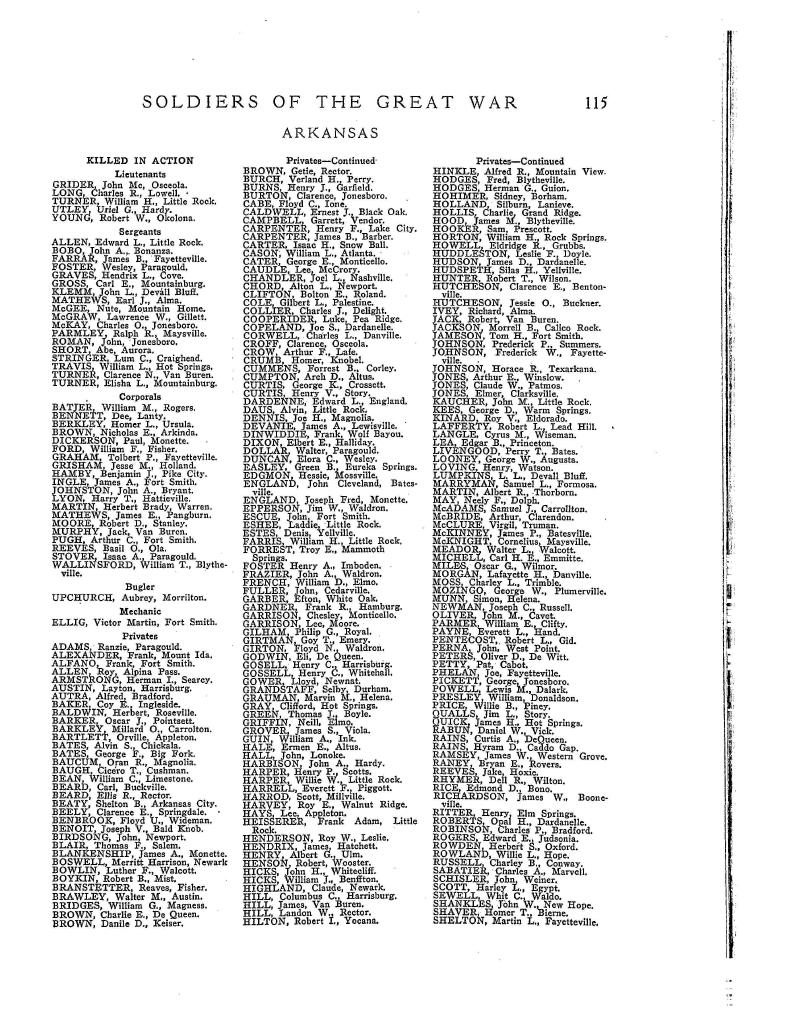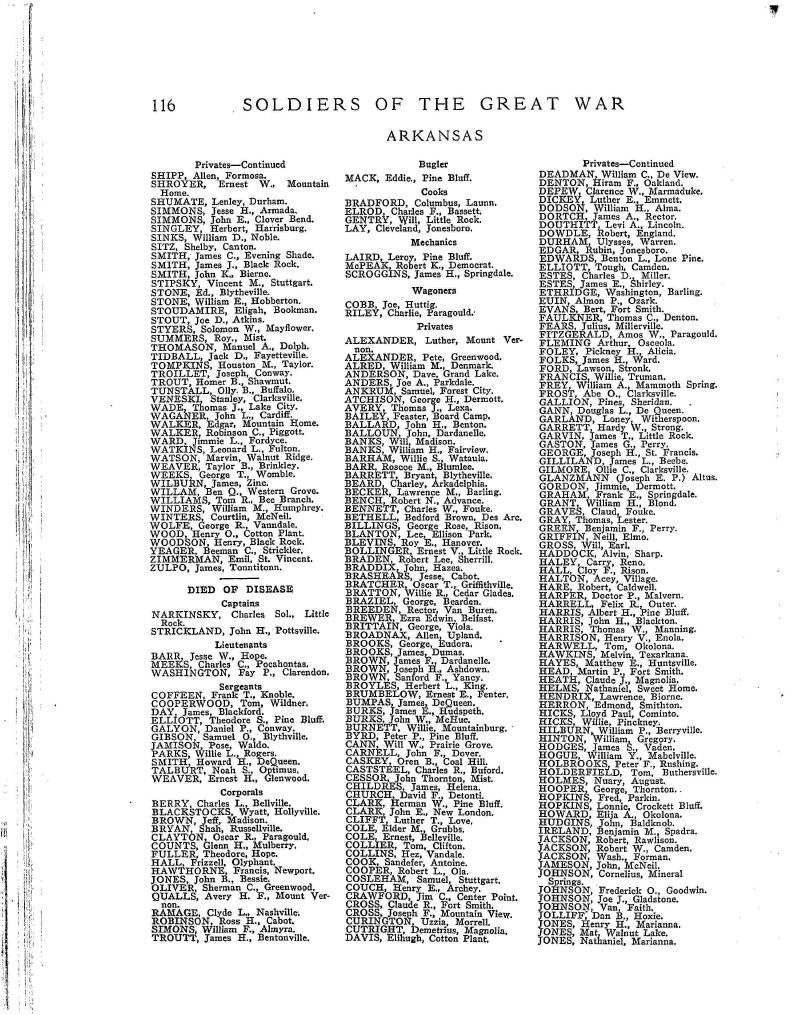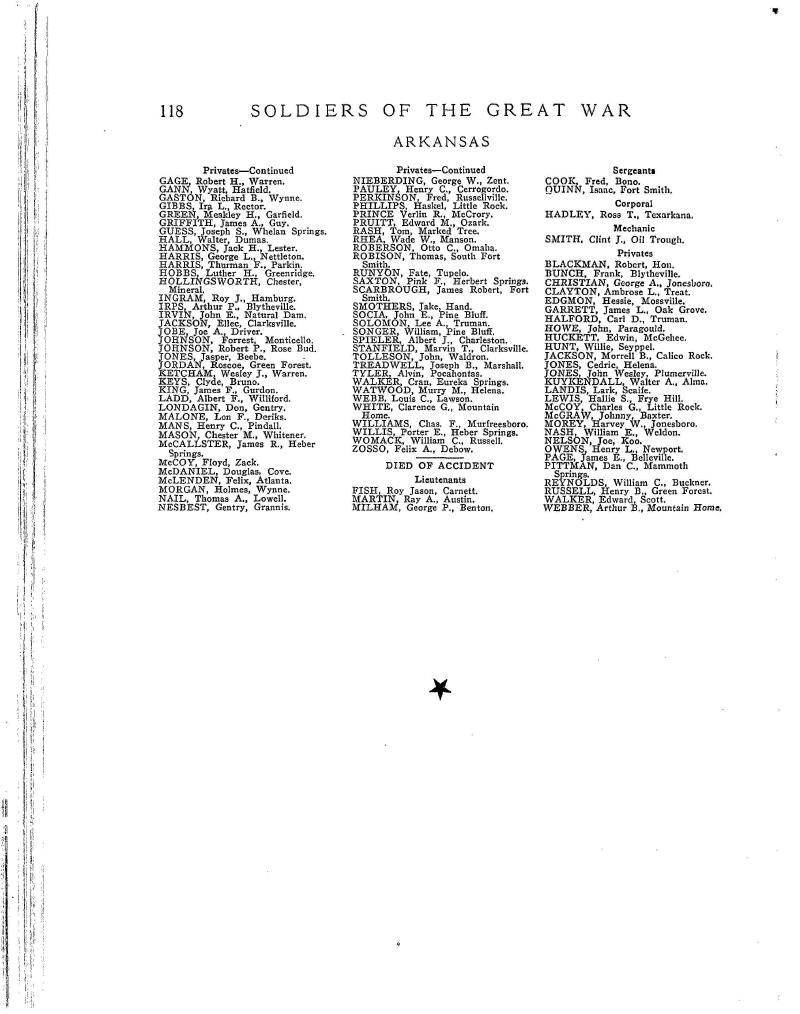 | St.Francis County
Arkansas |  |
Back to Main Page
Blue Angels in San Francisco
New-Early Arkansas Land Recrods from Spanish Land Grants to Swamp Land Sales, and 1868 Survey of Counties
WW II Pix from Library of Congress
Mark Twain on Impeachment
HISTORICAL SITES
St.Francis County Arkansas
Here is a picture of Eugene Williams from the book Hempstead's Historical Review of Arkansas, dated 1911. He started the Bank of Forrest City, son of Sheriff William Eugene Williams, shown also from the 1905 Forrest City Times Art Souvenir.
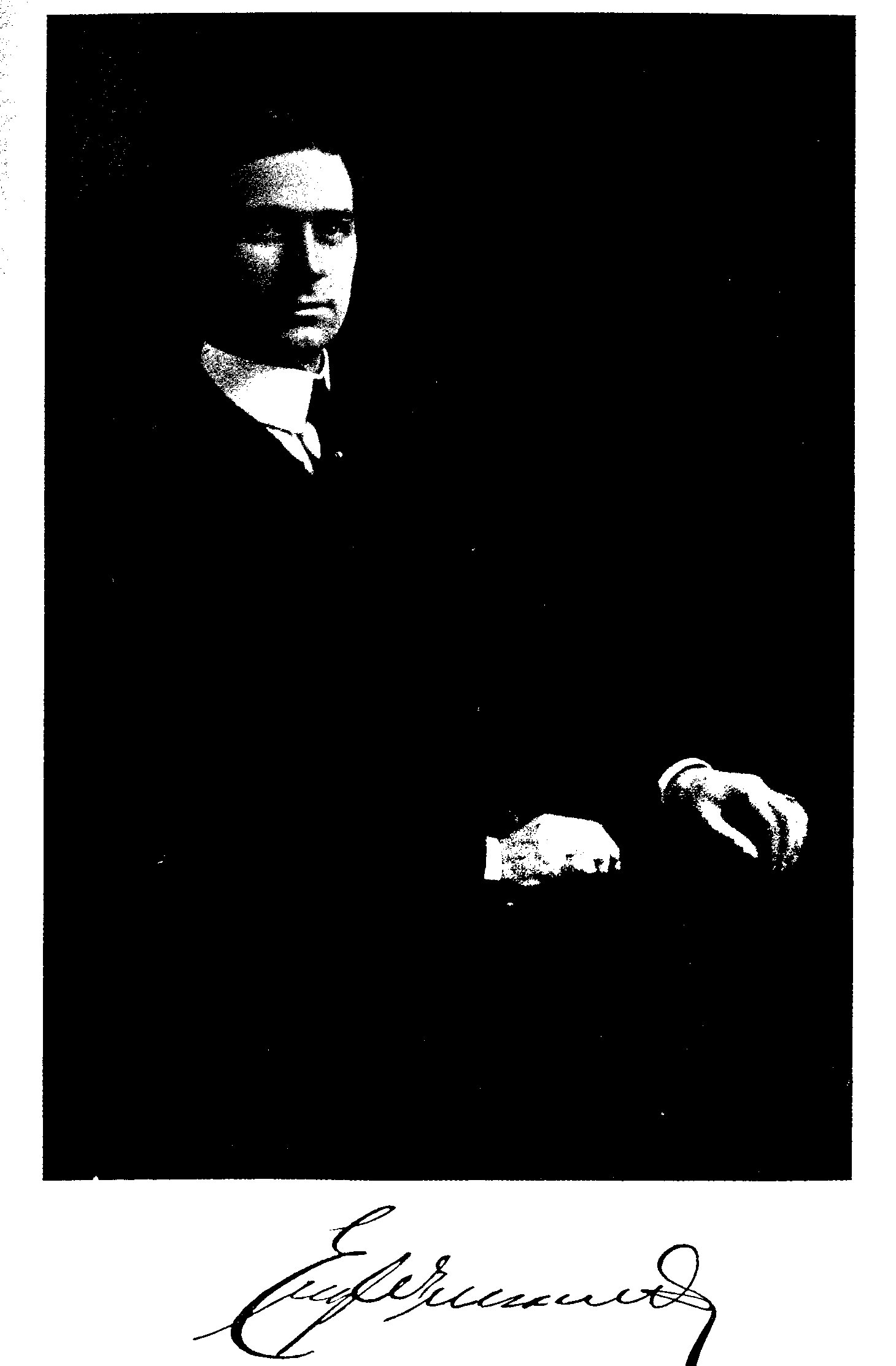
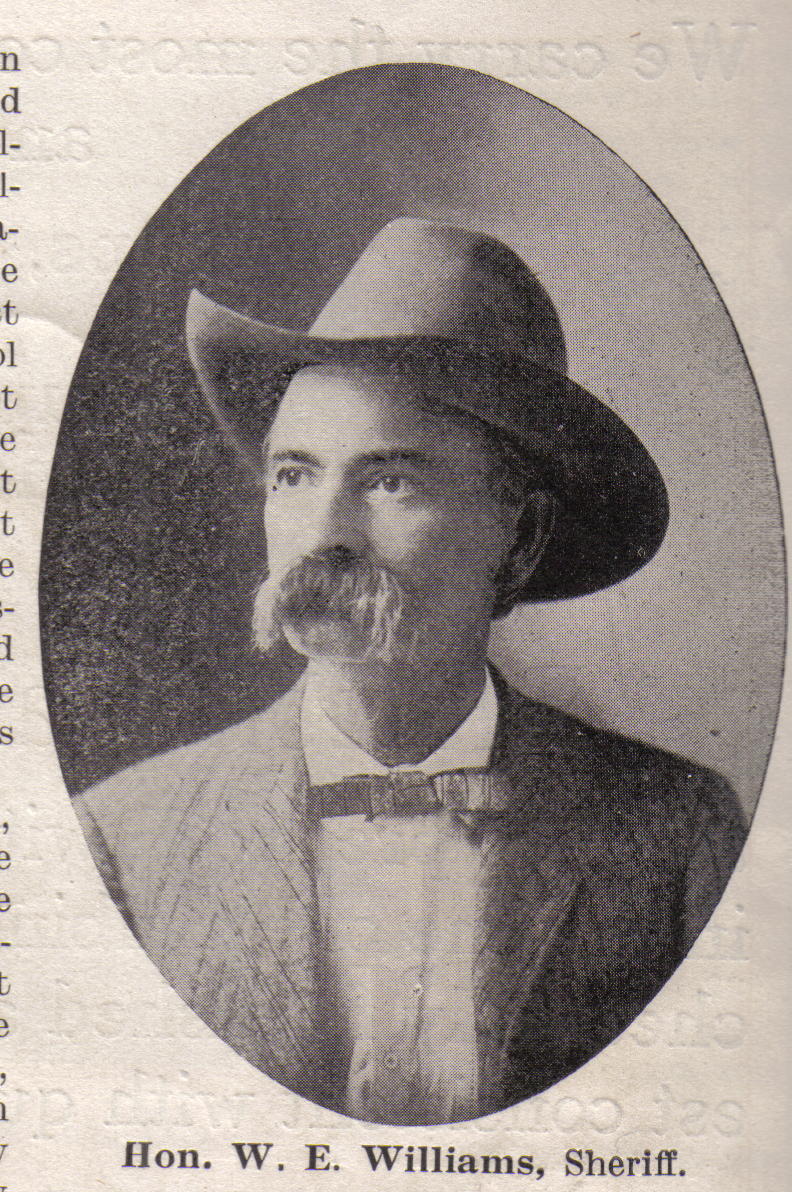
Cities and Towns in St.Francis County:
Blackfish Lake and others:1954 History of St.Francis County:Other communities of the county, are Round Pond, Blackfish Lake, Shell Lake, Powers, Good Hope, Gill, Pine Tree, Whitmore, and others.
Bonair-1954 History of St.Francis County:Bonair Community, located four miles south of Forrest City on Highway 1, is also known as McDaniel, the McDaniel's being prominent in the community. John McDaniel and his wife, whose descendants are still living in the community, came from Kentucky by covered wagon, crossed the Mississippi at Helena, and with cane axes cut through the wilderness in 1824, settling south of the present site of Forrest City. At that time there were only 12 white families between Helena and what is now Wynne. Other families now prominent in the community are Heustess, Danehower, and Pollard.
Caldwell-Population: 465
Caldwell, located five miles north of Forrest City on Highway 1 and the Missouri Pacific railroad, is believed to have been named for a Caldwell, probably William Caldwell, who came to St.Francis County and settled in the community about 1861. He engaged in farming and also in the saw mill business. The chief occupation of the people living there is agriculture. The largest store is the Lindsey Mercantile Store, and the Lindsey Gin Co. is also located there.
Campbell House-Historical SiteThe Campbell family William Wilson (Mr. Will) and son William Mann, prominent in the development of St. Francis County thru the family in the First National Bank of Eastern Arkansas, built 1917
Campbell House
Campbell House
Colt-Population: 368
The city of Colt was established by the Iron Mountain Railroad, which built a station there in 1882. The city was named for the railroad contractor in charge of the station's construction. Colt was incorporated in 1926 by a petition presented by William Stone. Per Loyd Sybert, here is record of man who Colt was named for:2-19-1895 - Colt - Thomas - - 2-18-1885 - Colt - Edwin Thomas - Sr. - (Thanks Loyd Sybert, who has considerable knowledge of S.Francis County)Descendants of Edwin Thomas Colt, Sr.Generation No. 11. Edwin Thomas 1 Colt, SR. was born September 1861 in New York, and died Bef. 1930 in Poss. Garvin County, Oklahoma. He married Fannie A. Fussell 19 February 1885 in Forrest City, St. Francis County, Arkansas, daughter of banker James V.Fussell and Louisa Alston. She was born 1862 in St. Francis County, Arkansas. Notes for Edwin Thomas Colt, Sr.:I believe that Edwin T. Colt was the contractor that completed the Helena branch of the Iron Mountain and Southern Railroad through Taylor's Creek, Telico Township, St. Francis County in 1882. A station was located on the new railroad in Taylor's Creek and named Colt Station. This information was compiled by Mrs.P.S.Stapleton, great granddaughter of Mr.Taylor's. As mentioned above the present town of Colt at the north end of St.Francis County on Highway 70 and the Missouri Pacific, was established in 1882, when the old Iron Mountain Railroad put a station there. It was called Colt Station for the railroad conductor of that name who built the railroad through that section of the county. Numerous residents at that time thought the new town should be called Taylor in honor of Mitchell Taylor, but he asked them to name it for the railroad contractor. The town of Colt was incorporated in 1816. At the time Colt was incorporated it had two cotton gins, six general stores, one drug store and two saw mills. In 1954 Colt now has two stores, one filling station and one gin. The town has two churches, Methodist and Baptist.
Attractions:
Stone House, William-Jct. of AR 306 & Ellis Lane, Colt, St. Francis County
According to oral history, the William Stone House was constructed c. 1884 and was a Sears & Roebuck pre-fabricated house. Because there is no documentation to support either claim, the Stone House was placed on the National Register as a c. 1900 structure. Little is known about Stone or the construction of his house, an example of a Plain Traditional residence with applied Colonial Revival and Folk Victorian detail. The house serves as a museum with displays on the history of Northern St. Francis County. It is operated by the Colt Community Development Corporation. Listed on the National Historic Register Oct. 8, 1992.
Forrest City-Population: 14,774- County Seat
Named for Confederate General Nathan Bedford Forrest, the town was laid out in 1869. It actually began in 1867 as Forrest's Camp, in the area Forrest made his headquarters while serving as contractor for completion of the railroad through the area. The town was incorporated in 1871 and became the county seat in 1874. Area was home to musicians Charlie Rich and Reverend Al Green, as well as prize fighter Sonny Liston. This portrait of General Forrest is in the St.Francis County Museum in Main Entrance Lobby, presented to the Museum by the Thomas Seay Family, June 2009. This article in the Forrest City Times Newspaper shows probable origin of same picture: April-29-1898 - Picture of Gen.Forrest Given - Mrs.Galloway, widow of the late newspaper magnate of the Memphis Appeal, Col.Matthew Campbell Galloway, of Memphis, has presented a picture of General Forrest to the Knights of Pythias lodge of this city and has been hung in the lodge named for him. It was presented by James Fussell, son in law of Col. and Mrs.Galloway.
The First United Methodist Church, built in 1917, was designed by John Gaisford, an English immigrant who settled in Memphis in 1896. In 1912, Gaisford wrote "How To Build A Church. The book was commissioned by the Board of Church Extension of the Methodist Episcopal Church, South and included designs for the Methodist Episcopal Church, South in Batesville, the Methodist Episcopal Church, South in Conway, and the Methodist Church in Clarendon. It is likely that the First United Methodist Church, the finest extant example of the Classical Revival style, was one of Gaisford's last designs, as he died on August 31, 1916. The design is not overly ornate, but reflects Gaisford's Classical inclinations. The First United Methodist Church was added to the National Register on May 19, 1994. Picture taken May 2006.
And here is picture of the (Old) First Baptist Church on Washington and Hill Streets, across the street from the Old Main Post Office, and the Methodist Church, at the crossing of Izard Street on Broadway Street, ca.1950.
Forrest City Cemetery
End of South Izard (behind Catholic Church)Forrest City, St. Francis County
Many founders of Forrest City are buried here, with graves going back to the 1800s.This photo is looking West towards the Catholic Church. Picture taken May 2006.
Forrest City Downtown Mural-Note:The building had been torn down when I visited in 2010, so they are gone!
Forrest City, St. Francis County
Shows Native Americans viewing the coming of the railroad, picture of the mural is in the Pictures for Forrest City, courtesy of Louise Lockhart
This picture courtesy of Ralph Pipkins
Forrest City High School-Was changed to the Junior High in 1931, and later changed to Elementary School, and now, in 2006 School Administration Offices.
Rosser Street-Forrest City, St. Francis County
Forrest City High School, built in 1915, replaced the brick masonry public school building that had been constructed in 1892. The new Forrest City High School, known locally as "Old Central," was designed by W.C. Lester and built by J.E. Hollingsworth. The original building featured a symmetrical front facade organized around a slightly protruding central entrance bay. Significant additions have been made to the original building, including the southern addition in 1928, the western gymnasium in 1934, and the classroom section at the western end in 1958. All additions have respected the essential Classical Revival character of the 1915 structure. Listed on the National Historic Register Oct. 8, 1992. Picture taken May 2006.
And now, a postcard showing side view of original structure with the gymnasium added later.
Hughes:Community:Note:Most data from 1954 History of St.Francis Co. by Forrest City Times-Herald:Forrest City, Jan 17- J S R Cowan, who served as St. Francis county Judge from 1894 to 1898, died at his home in Memphis Wednesday afternoon. Burial was in Memphis today. Mr. Cowan built the town of Hughes and owned many business buildings there. He served in the Confederate army during the Civil war. He is survived by his wife, Mrs. Murie Cowan, and two daughters, Mrs. G L Bradey of Memphis and Mrs. T K Russell of Chicago, Ill; Arkansas Gazette Jan./18/1930In 1914, F.O.Love and B.C.Friar built the first actual store in Hughes, a two story building. Mr.Friar was the first post master. He was succeeded by R.E.Love. In the 1890's three love brothers came to this area from Senatobia, Miss., and a fourth brother later. Two of them operated stores and bought up some land. The late N.L.Love bought a farm adjoining New Hope Farm. He was amused that his boat landing was named Blues Point, his post office named Happy, and the farm next to his New Hope; so, he named his farm Bright Future, now owned by Hugh Dillahunty. Mr.Love died in 1906 and on May 27, 1907, the heirs sold this farm to a fellow Senatobian, Robert M.Hughes, for whom Hughes is now named. Mr.Hughes had considerable interest around Senatobia and never actually moved to Arkansas. On Jan.1,1910, he bought a half-section of land from L.F.Dunn. Soon afterwards, the Missouri Pacific R.R. started a survey for a "cut-off" from Marianna to Memphis, abandoning the old circuitous route of its predecessor, the Iron Mountain. The survey came through the recently purchased Dunn Place and Mr.Hughes donated the right-of-way for a depot. The railroad stop was called Hughes. Mr.Hughes laid off lots and sold them for homes and businesses from time to time. In 1919, John J.Hughes of Haynes ( no relation to Robert M.Hughes, founder of Hughes) invested considerable money in town property, building three new brick store buildings and a modern gin. He was the chief organizer of the Bank of Hughes in that same year. The bank failed in 1923 with heavy losses to the depositors. There was quite a bit of rivalry over Mr.Hughes entering business and opening a bank. Hughes Auto Company, Chevrolet dealer of Hughes, Arkansas, is proudly entering its 28th consecutive year as a dealer. Gordon Love has owned and directed the operations of this firm for nearly a quarter of a century. He moved here at age 3 with his parents, the late Robert E. and Nancy (Gordon) Love, who moved here in 1900 from his birthday in Senatobia, Miss. He was born on Aug.17,1897, and received his degree from Marianna High School. He was employed by the Peoples Savings Bank in Marianna, and served in the U.S.Army during World War I. On Oct.22,1925 he married Miss Polly Jeffries, daughter of Richard W. and Mary (Wooldridge) Jeffries of Memphis, Mrs. Love passed away on June 2,1953. Mr.Love became manager of the Hughes Motor Company firm on Feb.1,1930, started by E.A.Rolfe, Sam Rolfe, and W.C.Bowen. They moved to their present site in 1925 when they sold Ford vehicles. He was elected the first President of the Hughes Chamber of Commerce, a charter member of the Hughes Rotary Club, and is also a Deacon in the Presbyterian Church. He is part owner of the Hughes Implement Company. Paul Chambers was founder of the Hughes Star-Herald, who sold to Mr. Fred L.Hedges, also, of Hughes, and then in 1942 sold to F.M.Causey Printing Co.In 1919, John J.Hughes of Haynes ( no relation to Robert M.Hughes, founder of Hughes) invested considerable money in town property, building three new brick store buildings and a modern gin. He was the chief organizer of the Bank of Hughes in that same year. The bank failed in 1923 with heavy losses to the depositors. There was quite a bit of rivalry over Mr.Hughes entering business and opening a bank.
Madison:1954 History of St.Francis County:In the early 1800's, the stage of influence and activity belonged to the bustling river town of Madison, instead of Forrest City. The principal means of transportation in the early history of St.Francis County was the St.Francis River on whose west bank the town of Madison nestled. Before the railroad linked the East and West through this area, Madison was a great shipping point with large steamboats docking regularly at the landing. The town continued to flourish until the village of Forrest City, a natural outgrowth of the railroad camp town of Confederate General Forrest, on the west side of Crowley's Ridge grew into importance and then later, in 1874, became the county seat, replacing Madison. For years Madison was the largest town in St.Francis County. In 1841 the county seat was moved to Madison from Franklin, about 1855 to Mt.Vernon and back to Madison shortly afterwards. Madison is located on the foot of Crowley's Ridge on the banks of the St.Francis River near the crossing of the Rock Island railroad. After Forrest City became the county seat, Madison declined until it was only a small village but then businesses began to discover the natural advantages of the community in the lumbering business. Soon it was the site of several lumbering firms and ever today this type of business is important with the Griffith Lumber Company and the DeMange Lumber Company located there. Madison was incorporate on June 22,1914. At one time, the road from Little Rock and Memphis ran through the town. Current businesses include, L.B.Jones & Co., W.W.Draper Seed Co., Inc., and the Bondol Laboratories. Also known as the home of the Bond family. Bert C.Pouncey Jr.-business man, banker, landowner, civic leader, and marine expert of Hughes, Ark. stands prominent in Eastern Arkansas. He owns Atoka Transportation Co.operating in river and canal towing, the 1500 acre Atoka Farm, located eight miles northeast of Hughes, and chairman of the Planters National Bank of Hughes, partner in the Kelly Oil Co., active in the Hughes School board and the Boy Scouts of America. He served as Commodore of the U.S.Coast Guard Auxiliary, as well as being a Lieutenant in the Army Engineer Reserve from 1931-1936, and in the Temporary Reserves in 1944. He was born in Helena, the son of Bert C. and Laura (Ladd) Pouncey Sr., formerly of Hughes, now of Memphis, his father being in Hughes in 1917. His paternal grand parents were J.F. and Marguerite Emma Pouncey of Dale County, Alabama; J.F.Pouncey having been a veteran of Johnson's Georgia Campaign during the Civil War. His maternal grand parents, W.E. and Marguerite Ladd, were of Richmond,Va. and Louisiana respectively. After graduating from Central High School in Memphis, Bert Jr. received a B.S.Degree in Commercial Engineering from Carnegie Institute of Technology in Pittsburgh, Pa., in 1932. From Jan.1933 to Sep.1935 he owned and operated the Milan Theatre Company in Milan, Tenn. In 1936, he moved to Hughes to assume the Atoka Farm management, started by his father 19 years before. On June 18,1932, he married Miss Dorothy Elizabeth Holmes, daughter of John W. and Julia (Roach) Holmes of Hughes, and to this union has been born two sons; Bert C. III, aged 19, graduate of Hughes High School, 1952, and now a seaman on the U.S.Coast Guard Cutter Durant on Pacific Patrol; Lee Robert (Bobby) , aged 12, student at Hughes Public School. Mr.Pouncey Jr. belongs to the Episcopalian-Holy Cross Parish, Hughes Rotary Club, American Waterways Operators, and St.Francis Co. Farm Bureau. Judge E.A.Rolfe and Sam Rolfe of Forrest City opened the first automobile agency in 1924 as the Hughes Motor Company and sold Ford cars for three years with W.C.Bowen as manager. The company is still in operation under the name of Hughes Auto Company and now sells Chevrolet cars and trucks. JUDGE 1908-1921, 1929-1933, 1935-1939 -ST.FRANCIS COUNTY-Judge E.A.Rolfe and Sam Rolfe of Forrest City opened the first automobile agency in 1924 as the Hughes Motor Company and sold Ford cars for three years with W.C.Bowen as manager. The company is still in operation under the name of Hughes Auto Company and now sells Chevrolet cars and trucks.-TREASURER 1927-1933-ST.FRANCIS COUNTY. The record of Charles Herod Wise as the successful owner of Wise Drug Store No.2. in Hughes, Ark., has earned the respect and confidence of the citizens of the second largest town in St.Francis Co., and now as Mayor he is rendering invaluable public service to his adopted home community. Mr.Wise was born Jul.2,1913, son of R.B. and Allie Mae (Hays) Wise, prominent family of Hughes, whose were then living in Choctaw Co., Miss., moving to St.Francis Co. in 1915. Herod Wise graduated from Mississippi Heights Academy, then received a Pharmaceutical Chemist Degree at the University of Mississippi, in 1925. On Nov.1,1936, he married Miss Amanda Nickle, daughter of R.C. and Stella (Andrews) Nickle of Hughes. They have a son, Burns Clifton Wise, and two daughters, Mary Ann Wise and Harriette Amanda Wise, all students in the Hughes Public Schools. Always interested in civic affairs, Mr.Wise has been President of the Hughes Rotary Club, and is a member of the Masonic Lodge.
Palestine:1954 History of St.Francis County:Palestine is a town of about 420 population, located seven miles west of Forrest City on the Rock Island Railroad and Highway 70(Interstate-40 in the late 50's) It is one of the oldest towns in St.Francis County and was incorporated in 1889, following Forrest City which was incorporated in 1871. There are several versions about the naming of Palestine. One is that it was named for a fatally injured employee of the old Crippen Saw Mill, which operated in the town for many years. The employee's name was Palestine. Another version is that a pioneer resident of the Jewish faith, and as the town's first Postmaster, asked that the community be named Palestine for Biblical reasons. At one time during the eventful history of this community, the Bank of Palestine, played its part in the growth of the town, as did an old hotel and two sawmills. Many car loads of railroad ties, stave bolts, and other lumber products were shipped from Palestine and even today, the making of ties is still important to the town. There are numerous churches:Methodist-Cumberland Presbyterian Church, Baptist Church, Church of Christ, and Antioch Baptist Church. The Palestine public schools were the first consolidated schools in the state of Arkansas. The only physician is Dr.H.L.McClendon today. Principal businesses in 1954:Sulcer Bros., Woods Bros., Littlefield's, Halbert's, Huckaba's, Floyd Pannell's, and Bell's, all general merchandise and grocery stores; Grimes Service Station and Grocery, Buster's Service Station, Cecil's Service Station and Garage, Fike's Cafe‚, and the Sulcer-Pankey Gin and Burns Bros.Gin. Located in a fertile agricultural area, Palestine is principally a farming town with most of its residents and those in the immediate surrounding area engaged in growing cotton, rice, soy beans, and raising livestock. More and more acreage is each year is engaged in the production of rice.
St.Francis
From Cross Co.Historical Society-Vol.4, No.4-Fall 2009Shown on Find A Grave:St.Francisville Cemetery, Cross Co., Ark.Buried at Mt. Hope Cemetery in old St. Francis, Arkansas Might these be some of your people? If so, contact George Anne Draper at 870- 238-2802 or g.draper@att.net.
Dan Boone 2/9/1844 to 10/20/1904
E.W. Chappelle 4/7/1817 to 5/30/1868
Mary Dixon 6/6/1872 to 3/12/1894 (her parents are listed as being founders of Wynne Pres. Church)
Wade H. Pippin died 3/10/1896
Bertha Pippin died 5/1/1903
Jay Milton Wilfong 4/11/1866 to 8/6/1866 died at 3 months His mother joined Mt. Hope Presbyterian Church; her name is in the session records. On FAG with Tstone- 12584159
John M. Koonce 2/22/1854 to 9/25/1882
Mary Johnnie Koonce 2/21/1882 to 2/8/1887 baptized at Wynne Presbyterian Church
Kate Reynolds Koonce 11/10/1879 to 8/21/1893 baptized at Wynne Presbyterian Church
Sarah Roberts 7/9/1808 to 1/7/1892
Saphrona Hartwell 1/10/1837 to 8/22/1885
Fidelie Thomson 12//30/1838 to 9/10/1885
Abandoned Cemetery and Village Found Near Wynne. While investigating his newly purchased property approximately 15 years ago, Scott Draper discovered several tombstones pushed into a ravine. After researching the scant history of the community which has been listed under Phillips County, Crittenden County, Saint Francis County and Cross County, Draper determined that his property is very likely the lost community of St. Francis. The cemetery on the land contains the names of people who were connected to the Mt. Hope Presbyterian Church, a forerunner of the present Wynne Presbyterian Church. These facts were confirmed in a copy of the Presbyterian Sessions Book begun at the establishment of the Mt. Hope Church in the mid 1800s by Cephas Washburn, a famous Presbyterian minister and pastor to the Cherokees. While the overall quality of the Mt. Hope Cemetery has been compromised over the last hundred years, the integrity of the site is intact because of the setting, the feeling of its history and the association with important events in the history of Northeast Arkansas. To reach the cemetery, one walks through a pasture to a protective grove of trees. One gets a sense of a place where life was lived at its fullest in the distant past, a place where people lived in fairly secluded communities. The setting is important because in researching the meager history that can be located, famous names like Connetoo, Cephas Washburn and Daniel Boone, a possible descendant of the first Daniel Boone, are connected to the land. The Burr's map and the map found in the Historical Atlas of Arkansas, show St. Francis, an early settlement that was home to pioneers of Indian and European heritage, in the same location as the Mt. Hope Cemetery. The buildings no longer stand, but their existence is evident in the grass that is thicker and fuller in an 80 by 80 plot where the Mt. Hope Presbyterian Church stood. The cemetery and its 12 remaining gravestones are indicative of a simpler time in the middle 19th Century to the early 20th Century. The existing stones mark the lives of twelve people with little more than their birth and death dates and a few with the Masonic symbol. Part of the problem with determining the importance and credibility of this site is the confusion about the name St. Francis. There was an earlier St. Francis that became Helena, and then the name of the local important waterway, the St. Francis River, causes confusion as well. However, the historical directory of Arkansas Post offices of 1832-1990 lists St. Francis post office from 1832 - 1856. A very old map shows St. Francis to be 3 miles southeast of Wynne, exactly where the Draper acres are located. Nowhere is this community of St. Francis recognized in any modern history books, although it is marked on some rare old maps. Many graves lie in the area, some marked and some not; two more cemeteries lie within walking distance, indicating a once populated area because families buried their loved ones close to home in historical times. If this area is to be preserved for future generations to study and to enjoy, it must be investigated by qualified anthropologists and archaeologists, brought to the attention of state and national preservation organizations, and properly developed and opened for public viewing. In the meantime, Draper is giving his undivided attention to maintenance and preservation. Tours of the site can be arranged by calling Scott Draper at 870-208-8265.(Story submitted by Scott and George Anne Draper-With Permission of Author.)The site of MT.hope church is also the site of a ancient Cherokee ceromonial dance ground. Adjacent to this site is a cemetery that dates back to the Fort called St.Francis in 1736. There are 48 bodies every 10ft. in a row for 1800 ft.This number of graves substanciates Robert Meyers document in the 1997 Arkansas Quarterly about the largest and oldest town in Arkansas . Swann town, which at its heyday around 1805, consisted of many Cherokee Chiefs such as Connetoo, General
Historical Directory of Arkansas Post Offices 1832 to 1990:St.Francis est.1880-Note:Changed to Benyard 1880. St. Francis/St.Francis Ferry post office est. 1832 and closed in 1856. Note:To Crittenden County 1843, then back 1843. St. Francis at same site as the present Draper property, two miles west of the St. Francis River.
Wheatley:1954 History of St.Francis County:The Town of Wheatley in the extreme western part of St.Francis County, on Highway 70( Interstate 40 now), and the Rock Island Railroad, was named for Wheatley Dennis, former resident of the community. The post office there was listed under the name of "Wheetley" for a long time. The town was incorporated in 1907 with the late C.F.Hemenway as the first mayor. He also was the first Cashier of the Rice Growers Bank, which was founded by the late Henry K.Smith, Sr., whose son, Henry K.Smith, Jr., is the current President of this fine banking institution. The Missouri and North Arkansas Railroad was constructed through Wheatley in 1907. The town itself was in Monroe County for sometime, but three sections of land were included in St.Francis county by a special act of the Arkansas Legislature so the Brooks family could be in the Wheatley School District. IN 1909 the Wheatley Rice Milling Co., was started in Wheatley but burned in 1929. At present, there is the Wheatley Rice Drying Corp., subsidiary of the Arkansas Rice Growers Association. The dryer in 1953 handled about 1,250,000 bushels of rice and is expanding its capacity 300,000 bushels more. It was in 1929. too, that a tornado hit the town, killing five people near the town, injuring others in the community and destroying thousands of dollars worth of property. The first lot sale was in 1878. The 1950 census shows 406 population. The Methodist, Baptist and Lutheran congregations hold regular services. Businesses in the town:Dupree Mercantile Co., Nash Implement Co., Fisher's Grocery & Market, W.T.Carter's Welding Shop, J.C.Ashworth Mercantile, D.R.McFall Mercantile, J.O.Burns Grocery, T.F.McCarty Mercantile, John DePriest CAF, Hemenway Specialty Co., and Wheatley Mill & Gin Co.. Also the Weis Butane Gas Corp. Principal occupation of the area is farming rice being the main crop.
Mann House
422 Forest Street-Forrest City, St. Francis County
Hours: Private Residence
The Mann House was designed by Charles L. Thompson in 1913. It is one of the most decorative and gracefully detailed of Thompson's Colonial Revival houses and is unique because its Colonial Revival features are allowed to stand alone, without the blend of Craftsman elements that characterize many of his later Colonial Revival designs. Listed on the National Historic Register Dec. 31, 1984. This picture taken May 2006.
Mount Vernon Cemetery
Highway 284-Forrest City, St. Francis County
Oldest active cemetery in the county. Started as a family cemetery but grew into a large cemetery with many prominent families buried here.
St. Francis County Museum
603 Front Street-Forrest City, St. Francis CountyTelephone: (870) 261-1744
Hours: 10 a.m.-5 p.m. Monday-Friday, 10 a.m.-2 p.m. Saturday
Includes geologic, Native American, African-American and county historic exhibits. Also exhibits on famous county residents, including singer Charlie Rich and boxer Sonny Liston. Located in the 1905 Rush-Gates home once used as a family residence and physician's office. Photo courtesy of Louise Lockhart
This next picture is of the plaque outside the St.Francis County Museum Commemorating the Civil War Veterans
The next picture is the old county courthouse clock face from the one built in 1897, currently on display in the Museum.
The next image is the plaque commemorating the Railroad Camp set up for which the town received it's name. It is on Highway 1 at the railroad tracks on Front Street in Forrest City,
Stuart Springs
Stuart Street-Forrest City, St. Francis County
Stuart Springs, the largest and best known of the three springs in the area (including Izard and Alum), furnished Forrest City and the surrounding communities with a fresh water supply until the 20th century. Stuart Springs was discovered before the Civil War by Professor James Stuart. Soldiers during the Civil War camped near the springs, and many of the soldiers were reportedly treated with the medicinal waters. Stuart Springs is now a 16-acre park in Forrest City and a favorite picnic location for local residents. Listed on the National Historic Register Aug. 3, 1977.In an article about Marvin B. Norfleet, History of Arkansas in 1911, it is reported that he purchased for a home the noted Stuart Springs, a tract of thirty-six acres situated in the northeast section of the city, where he arranged to have a fine residence erected, around 1910.
The next important pictures are of the Veteran's Memorial at the Civic Center recognizing the Veteran's who have given their lives for our country.
The next picture is of the Monument at the St.Francis County Courthouse to the Veterans from the county.
Here is a drawing of the Old St.Francis County Courthouse built in 1897, from the FC BLOG from Pauline Bogart
Here is another picture postcard for Carl's Courts, purloined from the FC Blog
Here are 4 pictures courtesy Hank Haven. They are of the Old and New Imperial and Rosemary Theaters in Forrest City back in the old days!First is the Imperial Theater before becoming a theater, then afterwards. Then we have the Rosemary Theater, before and after being made into theater.
Here is a picture courtesy of Henry T.Haven-It is his second grade class picture taken about 1926 with teacher Mrs.Coffee, can you name the other persons in list below? This grammar school was located near the old Armory built in 1949, now part of the First Baptist Church property.
Here is a drawing by cousin Charlie N.Haven, Jr. of the old St.Francis County Court House
Next is a picture of the old St.Francis County Courthouse torn down in 1976, built 1897.
A picture in front of the old Shearin-Wright Inc., Dealership, next to the City Hall, on Rosser Street, Forrest City, Arkansas, with Jo Ann Campbell pictured beside the convertible new in 1948!
Goodwin-Population: 225
Hughes-Population: 1867
This town was named after Robert Hughes, who donated part of his land to the Missouri Pacific Railroad company in 1910. After the town was established Mr. Hughes sold lots from time to time to businesses and families who moved to the town.
Madison-Population: 987
Originally established in the early part of the 19th century, Madison served as county seat to St. Francis county from 1841-1855, and from 1857-1874. Incorporated in 1914, Madison is believed to be named for President James Madison, who played an instrumental role in settling and removing the Cherokee nation to the Arkansas River valley.
Attractions:
Scott Bond Family Plot
Highway 70 West of 5th Street-Madison, St. Francis County
1933 burial plot containing remains of Scott Winfield Bond, a former slave who gained social prominence and became a self-made millionaire.
St. Francis River Bridge
US 70 over the St. Francis RiverMadison, St. Francis County
Hours: Accessible All Hours
The St. Francis River Bridge on U.S. Hwy. 70, constructed by the Wisconsin Bridge and Iron Company, was part of a 1930s highway and development project. Opening on Sept. 4, 1933, it is one of three swinging road bridges in Arkansas. Listed on the National Historic Register April 9, 1990. It was the main Bridge on East West traffic from Memphis to California until Interstate 40 was built by President Eisenhower in the 1950's.
And here is picture of the old Harahan Bridge which connected Memphis to West Memphis before 1950! hr>From Wikipedia:Chicago, Rock Island & Pacific Railroad 2-8-2 Mikado #2696 enters Memphis after coming off The Harahan Bridge on June 19, 1950. The roadway planks were removed and the Memphis-Arkansas Memorial Bridge was opened a year before Otto Perry had taken this photo.
The Harahan Bridge is a cantilevered through truss bridge[1] carrying two rail lines across the Mississippi River between West Memphis, Arkansas and Memphis, Tennessee. The consulting engineer in charge was Ralph Modjeski. The bridge also carried motor vehicles from 1917-1949, when the Memphis & Arkansas Bridge opened. The bridge is currently owned by Union Pacific Railroad. Carries Rail line
Crosses Mississippi River
Locale West Memphis, Arkansas and Memphis, Tennessee
Maintained by Union Pacific Railroad
Design Cantilevered through Truss bridge
Total length 4,973 feet (1,516 m)
Longest span 791 feet (241 m)
Clearance below 108 feet (33 m)
Opened July 14, 1916
Palestine-Population: 754
Palestine is located along the L'Anguille River, in the Forrest City Metro area.
Wheatley-Population: 372
In all likelihood this town was named after Wheatley Dennis, a resident in the community. Wheatley was incorporated in 1907.
Attractions:
Smith House
Memphis Avenue-Wheatley, St. Francis County
Hours: Private Residence
1919 Craftsman design by architect Charles L. Thompson. Listed on the National Historic Register Dec. 22, 1982.
Widener-Population: 335
Widener was established in the late 19th century, and was named after a conductor on the Memphis-Little Rock Railroad who lived in the community. This article in the 1895 Forrest City Times records his visit:3-1-1895 - Widener - John - - Widener station was represented in town Monday in the person of John Widener, for whom the station was named. Widener was incorporated in 1909.
And now a picture of the USS Arkansas.
WORLD WAR I VETERANS FROM ARKANSAS
Please share your pictures for posterity!
Updated 27 March 2017
Search the Arkansas GenWeb Archives
Table of Contents Maintained By: Lindsey Palmer St.Francis County Webmaster







